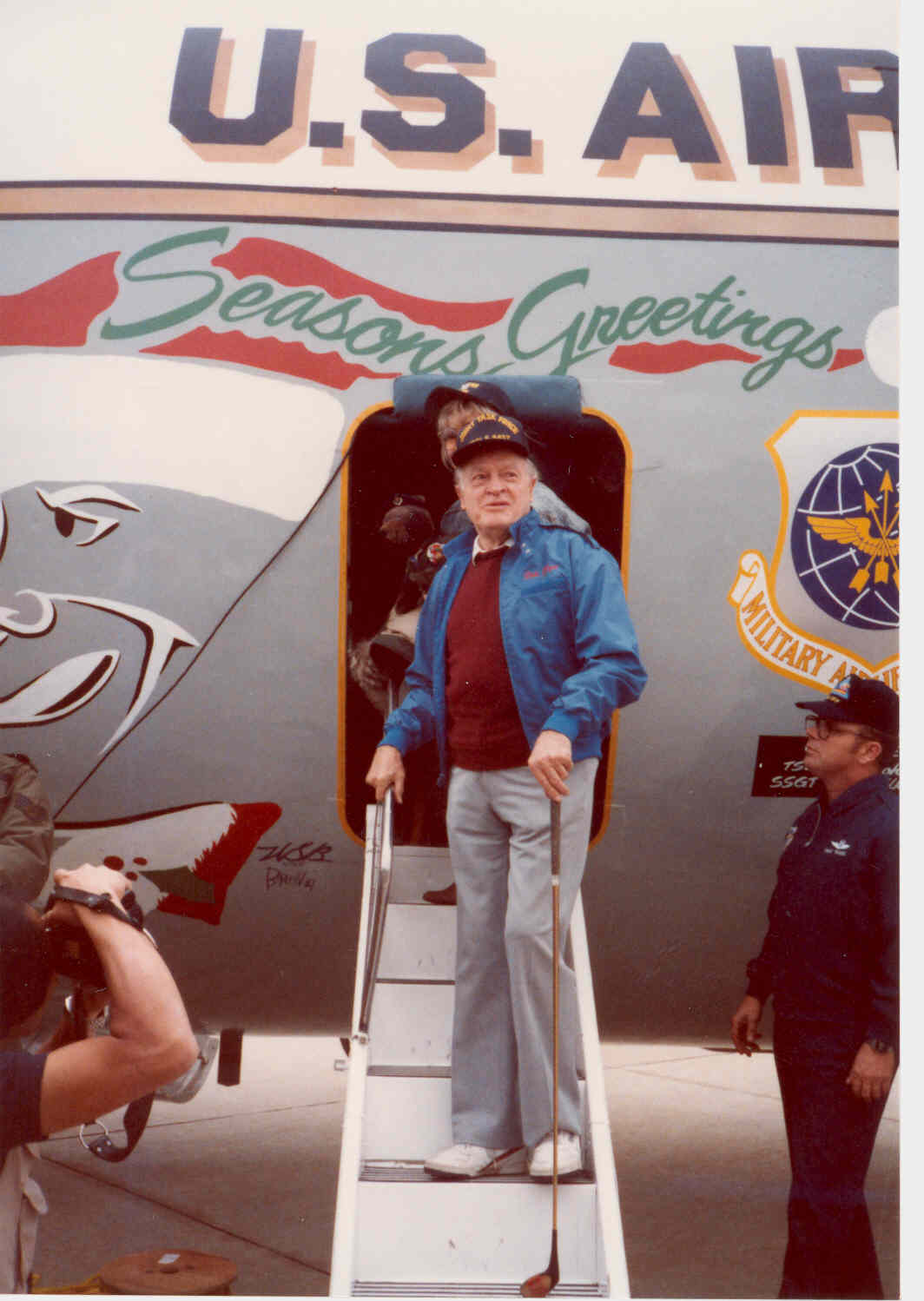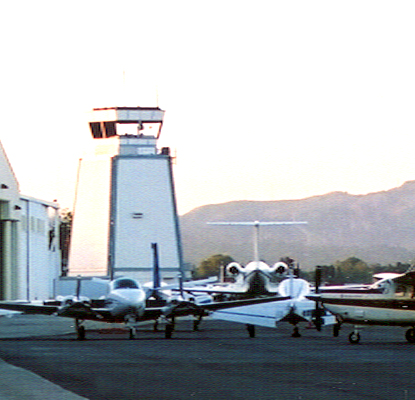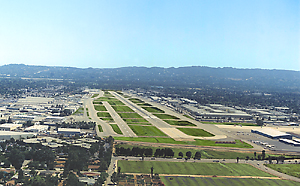Van Nuys - History Second Page
These decades marked the launch of many new VNY community and educational outreach programs to benefit local residents, businesses and students. By 1971, VNY had become the busiest general aviation airport in the nation, with airport records showing a total of 562,079 operations. The 10th Annual Van Nuys Airport Aviation Expo in 1973 displayed the command module spacecraft from Apollo 14, and in 1975, the FlyAway Bus Terminal opened. Providing nonstop bus service between the San Fernando Valley and LAX, the FlyAway was an important step in helping to alleviate freeway and LAX parking congestion. Today, the FlyAway serves more passengers than ever and is part of a growing network of regional bus terminals offering service to and from LAX. Several other activities in the 1980s further showcased VNY's commitment to working closely with the community. These included the implementation of a Noise Abatement and Curfew Ordinance governing aircraft operations, and the formation of the VNY Citizens Advisory Council in 1985 to assist and promote closer, more direct interaction with community representatives on a variety of airport-related issues. In 1986, VNY, as part of the Los Angeles Unified School District's Adopt-A-School Program, adopted Van Nuys' Kester Avenue School. The following year, the airport started a tradition of hosting an annual holiday event at the school known as “Santa's Visit.” In the 1980s, VNY played a role in the final chapters of an American tradition, when the legendary Bob Hope embarked from the airport on his last USO tour for American troops abroad. Finally, in 1988, the airport unveiled an observation area, open to the public daily and offering an up-close, firsthand view of airport operations.
The 1990s brought many more changes and developments to VNY, which continued to serve a vital role in Los Angeles. The 146th Airlift Wing of the California Air National Guard relocated from VNY to the Channel Islands in 1990. In 1991, the City of Los Angeles took over the function, previously handled by the Guard, of hosting VNY's annual Aviation Expo, continuing a long tradition of bringing world-class military and civilian aircraft displays and demonstrations to the San Fernando Valley. In the years that followed, the airport gained national recognition for superlative air shows with many “firsts” for the City of Los Angeles – including the first public appearances by the B-2 Stealth Bomber and the F-117A Stealth Fighter, and the first demonstrations by the advanced AV-8B Harrier jet and the elite U.S. Army Golden Knights Parachute Team. In 1994, the area formerly occupied by the Guard served as a critical operating site for the American Red Cross as it prepared thousands of meals to aid victims of the devastating Northridge earthquake. Also in the mid-90s, the airport adopted and relocated the annual Santa’s Visit to nearby Gault Street Elementary School. Business activity at the airport continued to grow during the decade and by 1999, an economic impact study indicated that the airport contributed about $1.2 billion annually to the Southern California economy and supported more than 10,000 jobs.
Los Angeles World Airports, which owns LAX, VNY, ONT and PMD, took a major step forward to further address noise concerns related to VNY when it initiated a $15-million residential soundproofing program in 2000. In 2006, Los Angeles' mayor signed VNY's Master Plan, designed to protect the environment, minimize adverse impacts on neighbors and guide land use at the airport as a Southern California general aviation center for the next 20 years. The long-term planning document focuses on encouraging orderly development of on-airport land use, with a key element providing for a designated propeller area. Before being signed by the mayor, the plan – with input from the VNY Citizens Advisory Council – was approved by the Board of Airport Commissioners, the Los Angeles City Planning Commission and the Los Angeles City Council. In other developments, the new millennium saw the start of a $30-million bond project by the Los Angeles Fire Department to better serve and protect local communities by constructing permanent air operations and helicopter maintenance facilities on the former Air National Guard site at VNY. At the FlyAway Bus Terminal, an improvement project completed in early 2005 added additional parking, more convenient passenger drop-off, an enlarged and modernized terminal building, and new landscaping. In 2003, VNY celebrated the centennial of flight and the 75th anniversary of aviation in Los Angeles with an exciting event that showcased an exact replica of the 1903 Wright Flyer and much more. In 2006, VNY's Rockin' Airfest event featured the first-ever City of Los Angeles flyover by the F-22 Raptor, the world's most advanced fighter jet. Today, VNY remains one of the world's busiest general aviation airports, and maintains its longstanding commitment to and leadership in general aviation, business and community service. A study released in December 2016 shows that Van Nuys Airport continues to play a critical role in the Southern California economy, contributing $2 billion annually, supporting over 10,400 jobs and generating an earnings impact of $674 million. In the years to come, the importance of VNY to Southern California, the regional approach to meeting passenger demand, and the entire nation’s air transportation system will continue to grow. |




